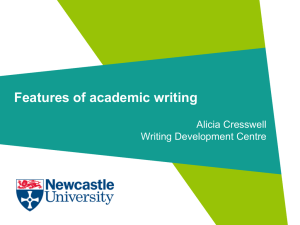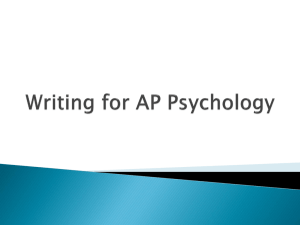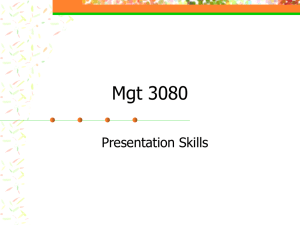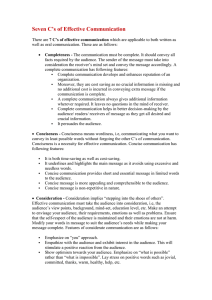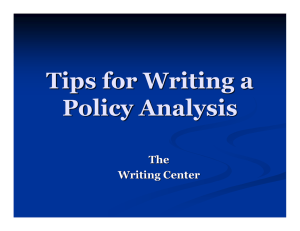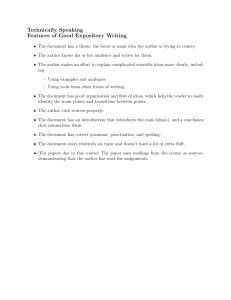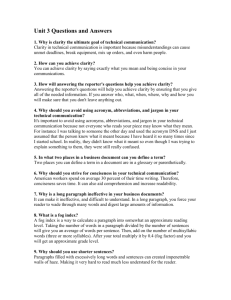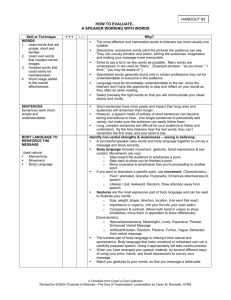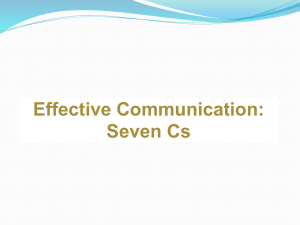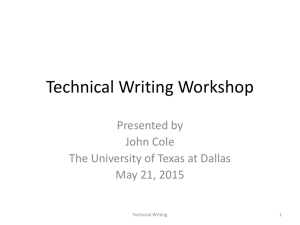Writing an essay
advertisement
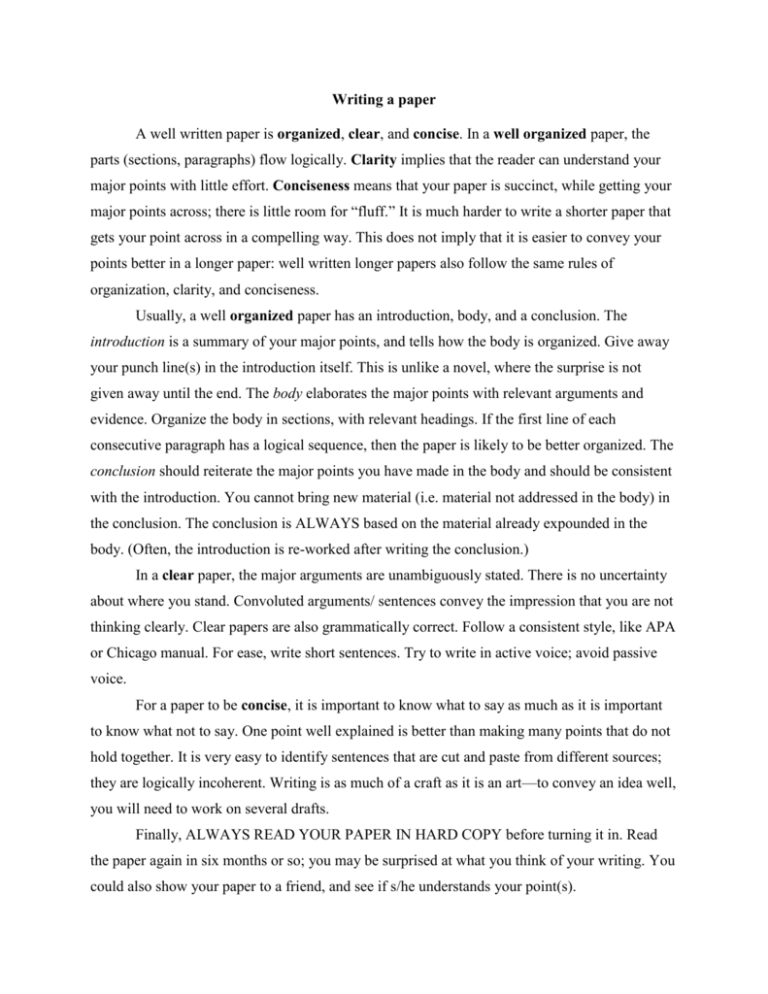
Writing a paper A well written paper is organized, clear, and concise. In a well organized paper, the parts (sections, paragraphs) flow logically. Clarity implies that the reader can understand your major points with little effort. Conciseness means that your paper is succinct, while getting your major points across; there is little room for “fluff.” It is much harder to write a shorter paper that gets your point across in a compelling way. This does not imply that it is easier to convey your points better in a longer paper: well written longer papers also follow the same rules of organization, clarity, and conciseness. Usually, a well organized paper has an introduction, body, and a conclusion. The introduction is a summary of your major points, and tells how the body is organized. Give away your punch line(s) in the introduction itself. This is unlike a novel, where the surprise is not given away until the end. The body elaborates the major points with relevant arguments and evidence. Organize the body in sections, with relevant headings. If the first line of each consecutive paragraph has a logical sequence, then the paper is likely to be better organized. The conclusion should reiterate the major points you have made in the body and should be consistent with the introduction. You cannot bring new material (i.e. material not addressed in the body) in the conclusion. The conclusion is ALWAYS based on the material already expounded in the body. (Often, the introduction is re-worked after writing the conclusion.) In a clear paper, the major arguments are unambiguously stated. There is no uncertainty about where you stand. Convoluted arguments/ sentences convey the impression that you are not thinking clearly. Clear papers are also grammatically correct. Follow a consistent style, like APA or Chicago manual. For ease, write short sentences. Try to write in active voice; avoid passive voice. For a paper to be concise, it is important to know what to say as much as it is important to know what not to say. One point well explained is better than making many points that do not hold together. It is very easy to identify sentences that are cut and paste from different sources; they are logically incoherent. Writing is as much of a craft as it is an art—to convey an idea well, you will need to work on several drafts. Finally, ALWAYS READ YOUR PAPER IN HARD COPY before turning it in. Read the paper again in six months or so; you may be surprised at what you think of your writing. You could also show your paper to a friend, and see if s/he understands your point(s).
